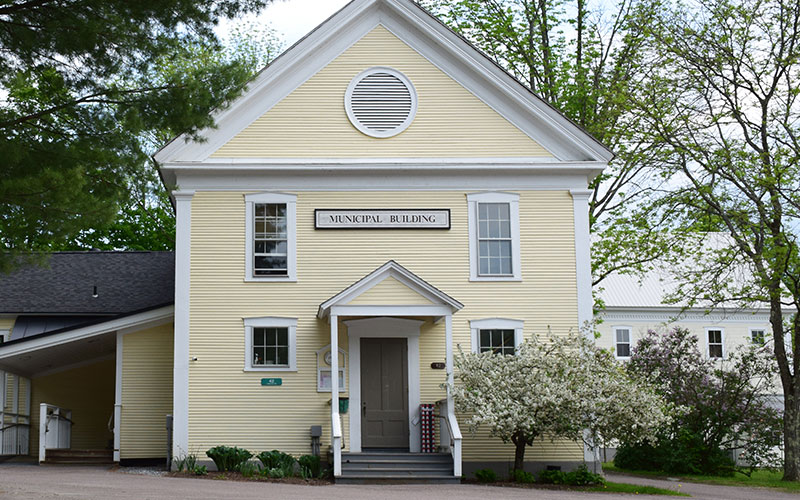The Warren Planning Commission has spent the last few years drafting new land use and development regulations (LUDRs) for the town. On Tuesday, February 28, the town planning commission and select board held a second public hearing on the draft, though the meeting was primarily the planning commission responding to the select board’s questions and comments with minimal input from residents. The discussion of the LUDRs was not on the select board’s February 28 agenda, though chair Luke Youmell said in an email, “It’s not warned again; we continued the hearing from our last meeting to tonight.”
In advance of the hearing, attorney Brooke Dingledine, who represents the citizen group Warren Residents for Responsible Cell TowerSiting and Development, provided the select board with a revision to the drafted language regarding telecommunications facilities. Following the notice the town received last fall indicating that Verizon intended to build a 140-foot cell tower on Airport Road, the group organized in its opposition to the notice as it was written and decided that the new LUDRs should have more specific language about where cell towers can be constructed (no application has been filed by Verizon for that project and the lease that Verizon was relying to be able to build a tower has subsequently been purchased by John Egan of Warren Vistas).
PROPOSED LANGUAGE
Dingledine drafted proposed language with the assistance of Morristown zoning administrator Todd Thomas, which had previously been provided to the board. Since the last public hearing held on February 14, 2023, Dingledine made one suggested change: instead of saying that building towers on ridgelines and hilltops is prohibited, the proposed new language would say prohibited locations would be “in prominently visible ridgelines and hilltops.” She said the proposed language was exactly the same as that upheld by the Supreme Court in a recent Bennington case.
About two hours into the meeting, Dingledine asked if the board and planning commission would be discussing the issue of telecommunications facility siting at the meeting and was told no. She asked when that discussion would take place and was told the board did not yet know. “We appreciate the feedback and are taking it into consideration,” board member Devin Klein Corrigan said.
PUBLIC NOTICE
Dingledine went on to say, “You’re not giving public notice of what you’re going to be doing. Normally the public is asked to comment on [the LUDR draft]. What we’re viewing is a work process” between the select board and planning commission. She asked, “Can we please have a public notice that tells us when telecommunications will be discussed?” The board said it would be on a future agenda.
The board raised a number of questions about the proposed LUDRs, from permitting swimming pools and ponds to decks and patios and other structures. Klein Corrigan said, “What seems apparent to me is it’s an increased level of regulation and I’m wondering what the appetite for that is.” Camilla Behn, who sits on both the planning commission and the select board, noted that with the influx of people moving to the area over the last few years, there is more pressure to regulate and maintain the character of the town and how it is developed. “Have we got more regulations here? Yes. Do we think we need them going forward? Yeah, we do,” she said.
HOT TOPIC
One hot topic was the issue of housing and other buildings and where and how to develop. The new regs limit the height of accessory structures to 24 feet (not to be confused with accessory dwelling units, structures refer to sheds, garages, etc.) as well as limiting the number of accessory structures that can exist on a property to three. “I don’t believe we should be regulating what people can do on their property,” Klein Corrigan said. She took issue with height restrictions and limiting the size of accessory structures, noting that someone may build an accessory structure such as a barn or garage and later decide to make it into an accessory dwelling unit to provide more housing. The planning commission agreed to change the height restriction on accessory structures. There were disagreements on where to develop denser housing and whether there was existing infrastructure, such as water, in the appropriate places.
“The big picture is, [the draft LUDRs] are well done and well-thought out. They’re not perfect. These guys will never get this off the table if we keep nitpicking,” select board member Bob Ackland said.
“We’ve tried to work out something that makes sense for everybody,” planning commissioner Jim Sanford said.
The draft LUDRs will continue to be discussed at a future select board meeting.













